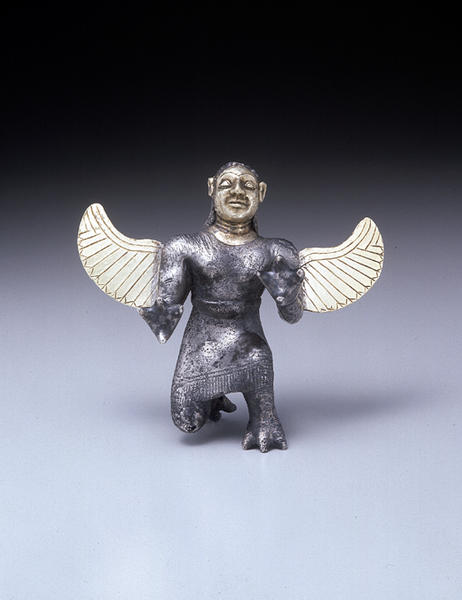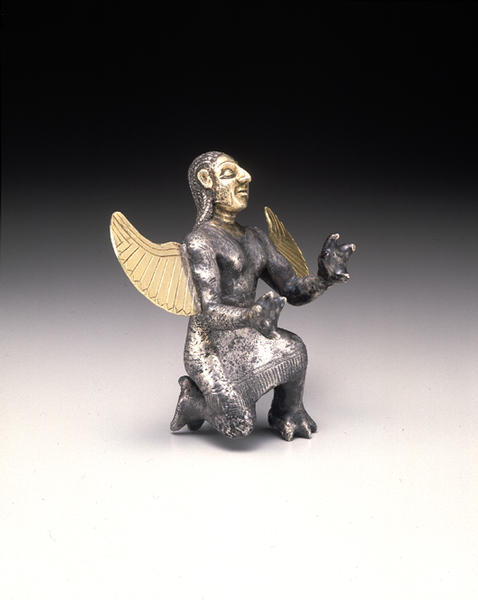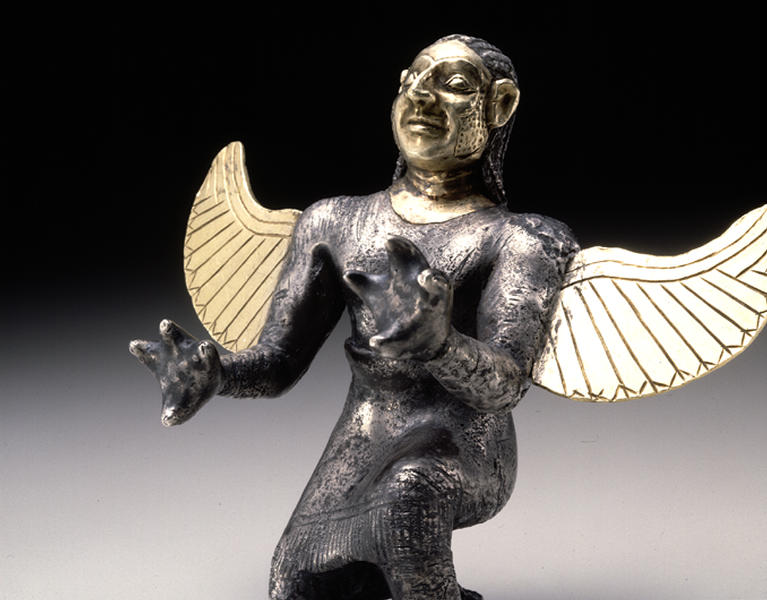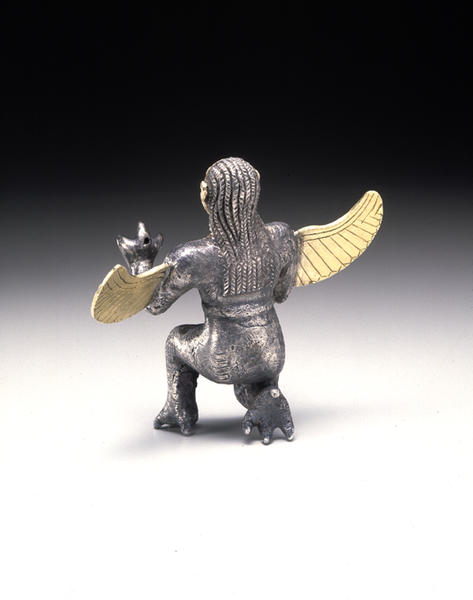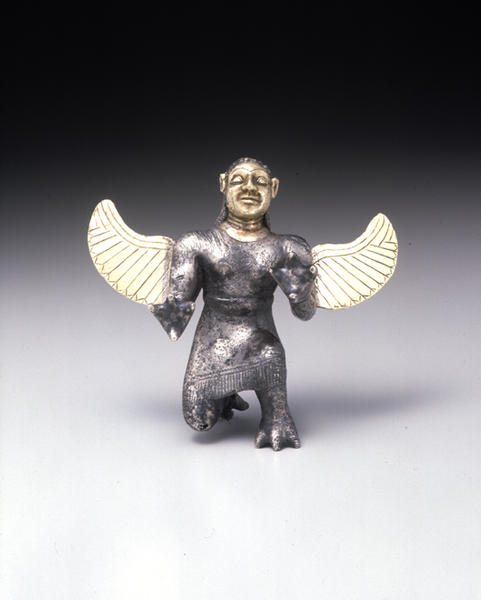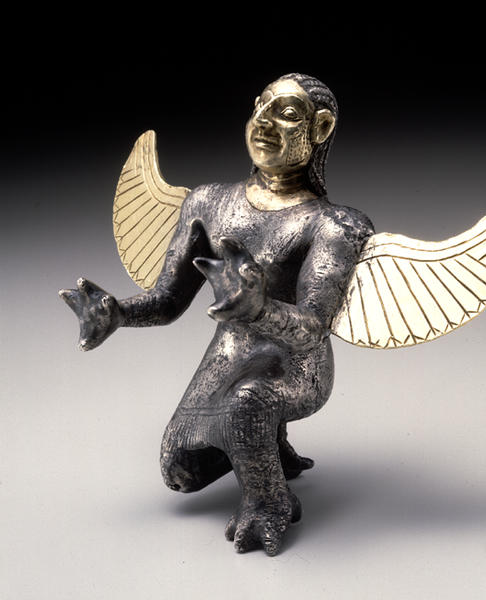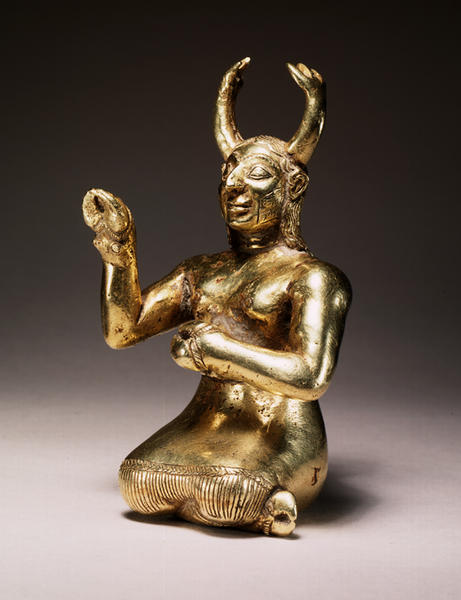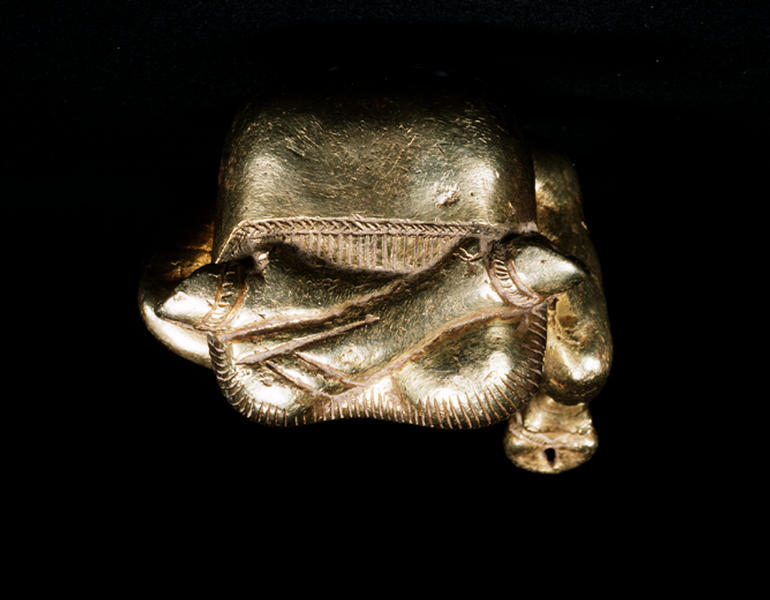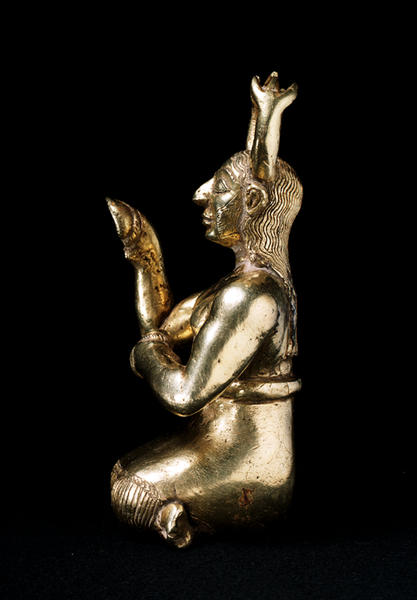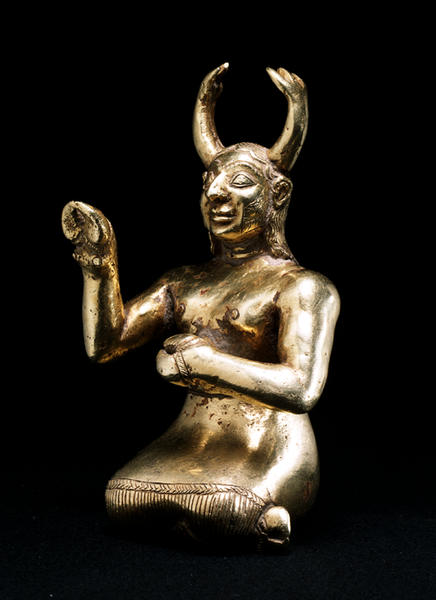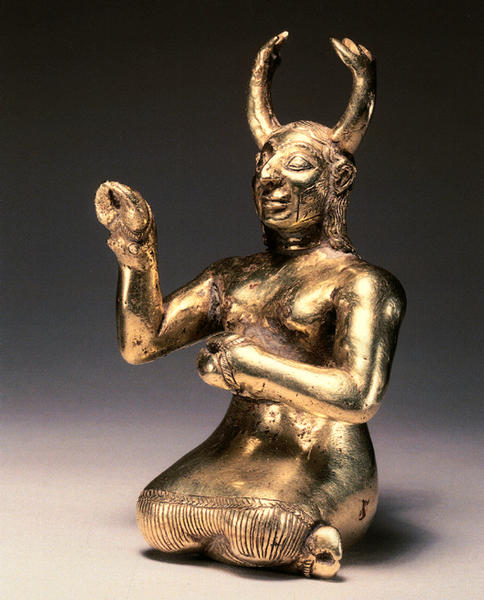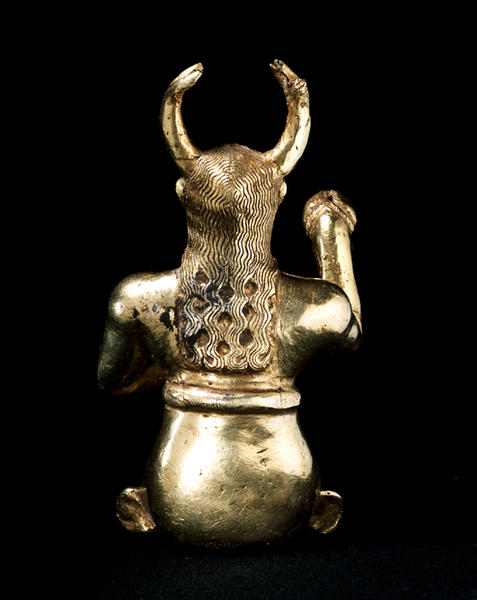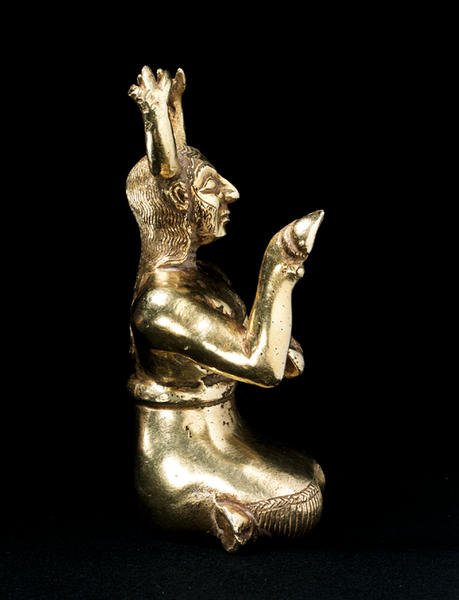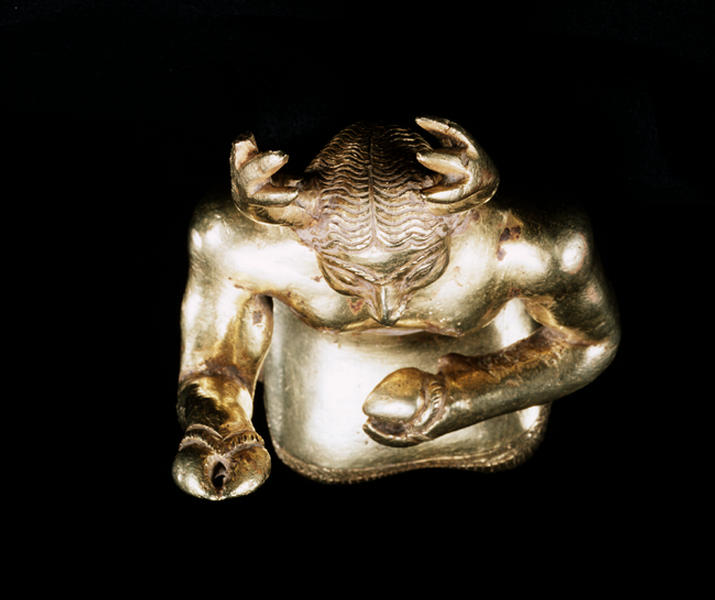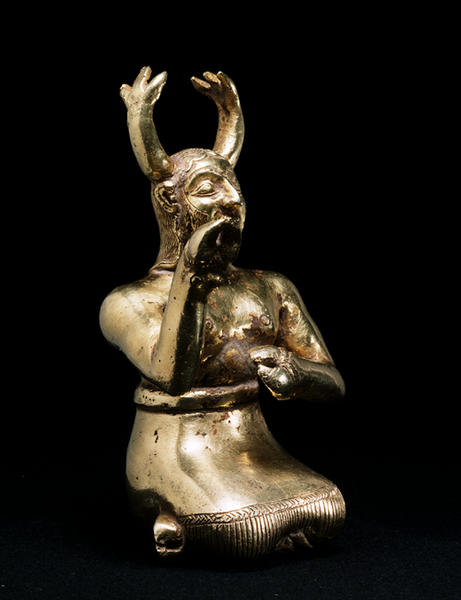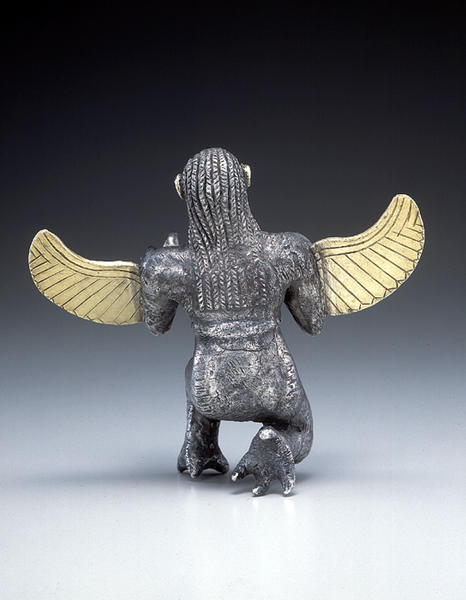Winged Divine Figure
- Southern or eastern Iran
- Late 3rd - early 2nd millennium B.C.
- Silver, electrum
- H-12
Catalogue Entry
The small silver figure squats with his left knee up, directs his face slightly upward and extends his both arms forward. A pair of large electrum wings, with engraved sword-shaped feathers, come out from each side of his upper arms. Each limb has four talons at its end. The figure's hair is shown in tufts by a herringbone-like pattern over its back, and his face, including the forehead and ears as well as the base of the neck, are covered by thin electrum sheet.
The small electrum figure sits straight, with firmly folded hind limbs with both legs shown to the right and left. Each limb has a hoof of the ungulate type at its end. The figure's right arm is held up with the bottom of the hoof directed forward while its left arm is held with the bottom of the hoof directed toward the abdomen. The head has two three-forked ox-like horns, and slightly wavy hair is parted in the middle and hangs over the back. No similar example of this horn type is known as yet; it is possible that a threefold horn or horn tassel may have been intended.
Each small figure is about 12cm high up to the top of the head. Each has two wrinkles on its neck, and nipples engraved on the breasts, the upper half of the body being naked. Each figure wears kilt-like clothing with a fringe at the skirt edge held by a large girdle. Eyebrows shown by two arcs joined at the middle of the forehead, the prominent and shapely nose and the pointed-oval eyes slightly enlarged at the upper side are special features found in the faces of statues from Mesopotamian art in the latter half of the 3rd millennium B.C. The electrum figure has pointed-oval holes in the space between hair tufts, and these are also similar to the representation of mustaches in dedicated statues in Mesopotamian art of the same period. There are examples of the similar statues representing the Mesopotamian style in southern Iran; a small copper figure of the 3rd millennium B.C. which is considered to derive from Elam, presently owned by the Museum of Antiquities in Berlin.*1 Representation of the hair in the silver figure is characteristic of eastern Iranian art, half-naked figures are commonly seen in ancient West Asian art, and the squatting or straight posture in figures wearing large girdles and kilts is found particularly in cylinder seals and stone vessels of southeastern Iran.
A cylinder seal in the Rosen collection (fig. 1), considered to have derived from Southeastern Iran, depicts two men flanking a radial design enclosing another figure. The two men wear large girdles and kilt-like clothes with a fringe at the skirt-end, and are depicted holding both arms up. They are wearing animal-shaped headdresses and are thought to represent heroic or divine males with supernatural power.*2 Figures similar to the bird-shaped figure in the squatting posture are seen in seals from Western Central Asia.*3 The combination of bull and bird is also considered similar to characteristcs of works from Western Central Asia as seen in the Miho Museum goblet (cat. no. 2 in this catalogue). These two small figures might have represented heroic or divine males dressed up as vultures or bulls with supernatural power, or may have represented deities.
